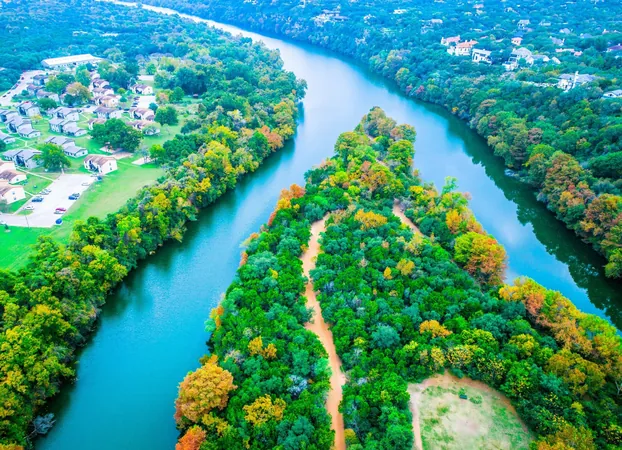
The Mystery of River Splits Unveiled After a Century
2025-07-18
Author: Wei
Rivers: More Than Just Waterways
Rivers are essential to life on Earth, transporting water, nutrients, and sediments from towering mountains to vast oceans. They carve paths that sustain ecosystems and human communities, but have long held a secret—why do some rivers split into multiple channels while others meander in a singular path?
A Breakthrough Research Study
After more than a hundred years of debate, scientists from the University of California, Santa Barbara, have cracked the code. An extensive analysis of 36 years of satellite data from 84 rivers around the globe reveals the surprising answer.
Why Do Rivers Split?
According to lead author Austin Chadwick, rivers create multiple channels when erosion of their banks occurs at a faster rate than sediment is deposited on the opposite banks. This imbalance leads to a gradual widening and splitting of the channel.
The Long Debate in Earth Science
This groundbreaking research not only settles a long-standing conundrum in Earth science, but also sheds light on flood risks and improves methods for restoring rivers to their natural states.
Types of Rivers and Their Behaviors
Rivers can be categorized as either single-threaded or multi-threaded. The latter type, often seen in the world’s largest rivers, received less attention historically compared to their single-threaded counterparts, which were easier to study. Chadwick’s journey into understanding this stemmed from observations made in a laboratory where he noted how multi-threaded rivers unexpectedly widened due to accelerated erosion.
Innovative Research Techniques
To further investigate, the research team utilized cutting-edge satellite imagery, specifically Landsat data from Google Earth Engine, alongside a technique known as particle image velocimetry—initially meant for lab fluids—to analyze riverbanks globally.
The Balancing Act of Erosion and Deposition
Their findings were compelling. While single-threaded rivers maintain a balance between erosion and sediment deposition, multi-threaded rivers see erosion winning the battle, leading to the creation of islands and bars that separate their many channels.
Impacts of Human Intervention on Rivers
The 20th century saw rivers confined to narrower channels due to urbanization and agriculture, reducing flooding in some areas but resulting in disrupted ecosystems and heightened flood risks. A vital example is the Mississippi River during Hurricane Katrina, where the floodplain’s disconnection exacerbated flooding.
New Solutions for River Restoration
In response to these challenges, researchers developed a formula to estimate the necessary space and time required for a river’s restoration to a multi-threaded state. This research indicates that single-threaded rivers may need up to ten times more space than their multi-threaded counterparts, reshaping plans for future restoration efforts.
Rethinking River Restoration Feasibility
Historically thought to be prohibitive in size and expense, projects to restore rivers may now appear more manageable upon further classification. Many rivers once presumed single-threaded may in fact have been multi-threaded, potentially lowering restoration costs.
Looking Ahead: Future Research Directions
The research team, led by Ganti, is now focused on how river behaviors may evolve due to climate change and human activities. Chadwick continues his explorations at Columbia University, while Greenberg dives deep into sediment movement and the long-term implications of dams.
A Deeper Understanding of Our World
Rivers don't merely flow; they nourish agriculture, sculpt urban landscapes, and transport resources across vast terrains. This new endeavor demystifies how they reshape themselves and our environment, allowing for kinder coexistence with nature.



 Brasil (PT)
Brasil (PT)
 Canada (EN)
Canada (EN)
 Chile (ES)
Chile (ES)
 Česko (CS)
Česko (CS)
 대한민국 (KO)
대한민국 (KO)
 España (ES)
España (ES)
 France (FR)
France (FR)
 Hong Kong (EN)
Hong Kong (EN)
 Italia (IT)
Italia (IT)
 日本 (JA)
日本 (JA)
 Magyarország (HU)
Magyarország (HU)
 Norge (NO)
Norge (NO)
 Polska (PL)
Polska (PL)
 Schweiz (DE)
Schweiz (DE)
 Singapore (EN)
Singapore (EN)
 Sverige (SV)
Sverige (SV)
 Suomi (FI)
Suomi (FI)
 Türkiye (TR)
Türkiye (TR)
 الإمارات العربية المتحدة (AR)
الإمارات العربية المتحدة (AR)